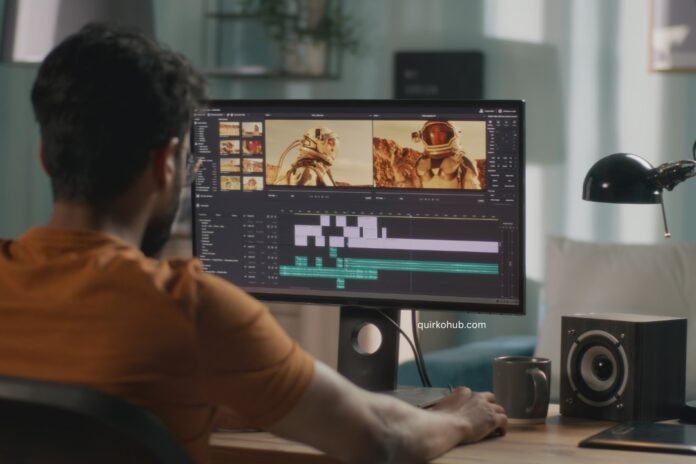Source Filmmaker (SFM) is a powerful animation tool developed by Valve, widely used for creating cinematic-quality animations using the Source engine. However, when working with custom assets, compiling models and textures into SFM-ready formats is crucial—and that’s where SFMCompile comes in.
This comprehensive guide walks you through everything you need to know about SFMCompile—from setup to advanced optimization, with practical insights and best practices.
Key Takeaways
-
SFMCompile simplifies the conversion of assets into SFM-compatible models.
-
Streamlines workflow through automation, scripting, and performance tuning.
-
Essential for asset creators, modders, and animators using Source Filmmaker.
-
Helps detect and resolve errors during compilation.
-
Supports quality control, versioning, and output management.
Overview of SFMCompile
SFMCompile is a compilation toolkit or process used to convert source files—like models (.SMD), textures (.TGA/.VTF), and configurations (.QC)—into usable assets for Source Filmmaker. It bridges the gap between raw development assets and their final in-engine representation.
Purpose and Functionality
-
Converts raw models and textures into .MDL files.
-
Automates the QC script parsing and compilation via tools like studiomdl.exe.
-
Offers support for batch compiling and structured output management.
Installation Requirements
To use SFMCompile effectively, you’ll need:
| Requirement | Description |
|---|---|
| Operating System | Windows 7 or higher (64-bit recommended) |
| Source SDK Tools | Comes with Source Filmmaker or via Steam’s Source SDK Base |
| .NET Framework | Version 4.5 or above (for GUI-based SFMCompile tools) |
| Python (optional) | For custom automation scripts and QC generation |
| Disk Space | 1 GB minimum for SDK + workspace assets |
Getting Started with SFMCompile
Setting Up the Environment
-
Install Source Filmmaker via Steam.
-
Locate
studiomdl.exe:-
Typically found in:
C:\Program Files (x86)\Steam\steamapps\common\SourceFilmmaker\game\bin\
-
-
Prepare workspace folders:
-
/modelsrc/for raw SMD/DMX files -
/materialsrc/for raw texture images -
/game/models/for output compiled models
-
Basic Command Syntax
SFMCompile typically wraps around studiomdl.exe:
studiomdl.exe -game "path_to_game" yourmodel.qc
Use batch scripts or command line tools to process multiple files at once.
Configuration Options
You can modify compile behavior via QC files and command-line arguments:
QC File Key Sections:
$modelname "myfolder/mymodel.mdl"
$body "Body" "mymodel.smd"
$sequence "idle" "idle.smd" fps 30
$cdmaterials "models/myfolder/"
Useful Compile Flags:
-
$staticprop– Marks model as static. -
$scale– Uniform scaling during compile. -
$surfaceprop– Sets physical surface properties.
Compiling Assets
Preparing Source Files
-
Use Blender, Maya, or 3ds Max to export .SMD or .DMX files.
-
Textures should be converted to .VTF using VTFEdit or equivalent.
-
Align model origins and names according to SFM standards.
Optimization Techniques
-
Reduce polygon count for real-time performance.
-
Use LOD models for scalable asset quality.
-
Optimize textures to prevent memory bloat.
Common Compilation Errors
| Error Message | Possible Cause | Solution |
|---|---|---|
Unable to load material |
Wrong material path in QC | Correct path in $cdmaterials |
Model too many bones |
Bone count exceeds Source limit | Simplify rig |
Unknown command in QC file |
Typo or invalid syntax | Check QC documentation |
studiomdl.exe crashes |
Corrupt mesh or incorrect SMD | Re-export clean model |
Output Management
Understanding Output Directories
Compiled assets typically go to:
...\SourceFilmmaker\game\usermod\models\
Use symbolic links or custom paths in the gameinfo.txt to manage multiple asset sources.
File Naming Conventions
-
Use lowercase.
-
Avoid spaces and special characters.
-
Stick to clear versioning:
model_v01.mdl,model_final.mdl
Advanced Features
Custom Scripts and Automation
-
Use Python, Batch, or PowerShell scripts to auto-compile multiple models.
-
Automate QC generation based on a template.
Integration with Source Control
-
Use Git to manage QC scripts and source assets.
-
Track changes and rollbacks for collaborative projects.
Best Practices
Source File Management
-
Keep original SMDs/DMX in versioned folders.
-
Document QC files for reusability.
Quality Assurance
-
Always preview compiled models in SFM before final usage.
-
Use HLMV (Half-Life Model Viewer) for quick checks.
Troubleshooting and Support
Common Issues and Solutions
-
Invisible Models: Check if
$bodyreferences the right SMD. -
Missing Textures: Verify texture names and VMT paths.
-
Crash on Load: Re-export model with clean bone weights.
Community Resources
-
Facepunch Forums (archived)
-
SFM Discord servers and Reddit subs like r/SFM
Performance and Optimization
Enhancing Compile Times
-
Use local SSD storage for faster file I/O.
-
Compile only changed assets using makefile logic.
Resource Management
-
Archive old source folders into .ZIPs.
-
Delete intermediary files after stable builds.
Updates and Change Log
Accessing the Latest Versions
-
Follow SFM modding communities for tool forks.
-
GitHub and SourceForge host various SFMCompile wrappers.
Understanding Release Notes
-
Look for changes in supported syntax or compiler behavior.
-
Stay updated on Source engine limits or new model formats.
Final Words
SFMCompile is the heartbeat of asset creation in Source Filmmaker. Whether you’re crafting cinematic masterpieces or memes, a streamlined compile process saves hours of troubleshooting and elevates the final product’s quality. With proper tools, best practices, and community support, you’ll turn raw assets into polished, production-ready content with confidence.
